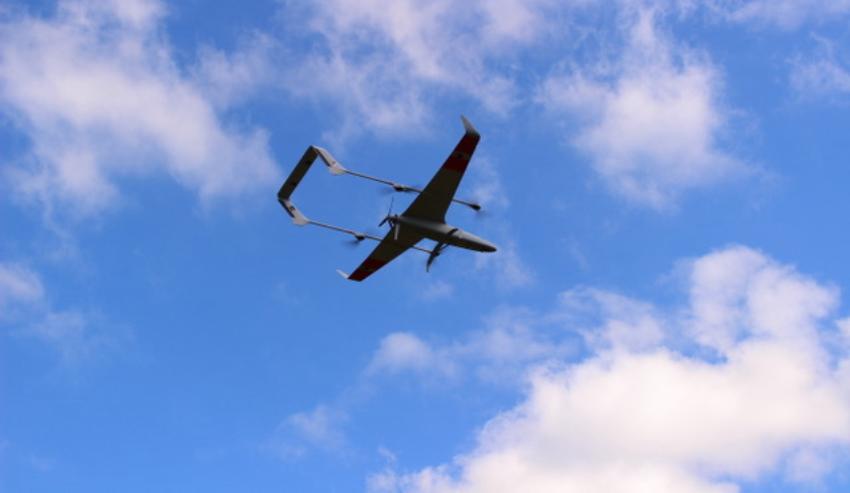A former naval dockyard in NSW has become home to a state-of-the-art drone manufacturing operation, delivering products with scope for defence and commercial uses.
Carbonix, which is undertaking its operation at Sydney's heritage-listed former naval dockyard Cockatoo Island, is the first Australian company to commercialise and export fixed-wing drones using advanced composite materials like carbon fibre.
Minister for Trade and Industry Niall Blair said Carbonix is one of the companies the state is supporting through the NSW Defence and Industry Strategy, which aims to grow defence and aerospace industries to promote jobs and investment as well as innovation, research and commercialisation.
"On a World Heritage site, in the heart of Sydney, Carbonix is building on a proud maritime defence history with whole new industry which is set to evolve more and more in the years to come," Minister Blair said.
"From an infantry unit to an air force pilot, drones have rapidly become an indispensable part of the tool kit for every arm of the modern military.
"As Australia moves towards manufacturing its own military drones, the ground-breaking work of Carbonix means NSW will be at the forefront of this technology."
Carbonix's latest development is a fixed-wing drone called Volanti.
"It looks like a plane but has multi-rotors attached so it can take off and land vertically," Minister Blair explained.
"It’s built with carbon fibre making it extremely light. The airframe alone weighs just 4 kilograms but it [is] capable of carrying equipment loads twice its body weight.
"Impressively, the nose cone weighs less than a foam cup but is 10 times as strong and can handle hot temperatures up to 120 degrees Celsius.
"The potential for a drone of this kind is endless – it can help farmers monitor and analyse crops, survey mining operations, transport emergency medical supplies, undertake search and rescue missions in military and defence applications and even aid in shark spotting."
Executive general manager of Carbonix Jeff Eager gave evidence to the NSW Legislative Council’s standing committee on state development where he explained how the company has grown from high-speed watercraft to high-tech drones.
"We are very small in the sense that we are emerging in this space," said Eager.
"We evolved out of marine, hence the location at Cockatoo Island. It is a great place to build watercraft. You go out and fail, drag it back, and go again. We were approached from an offshore company to build some drones – that is the most common term – for a Spanish military contract so the variety you see behind me is what is called a VTOL, or vertical take off and landing, but cruises into horizontal once it has reached a certain height.
"We were approached to build just a fixed-wing aircraft for that Spanish company. So we built three of those and realised of course that this was a rapidly emerging space, so we evolved and moved out of high-speed watercraft into this space and have been developing for the last two years solid."
Eager said the potential in the drone sector is huge, and one in which Australia is punching above its weight.
"It is one of the fastest growing parts of the aerospace industry mainly because of the small end; it is very affordable, accessible, adaptable and somewhat unfortunately quite anonymous if you want it to be," Eager said.
"It is a high-tech industry that is moving places fast. The aerospace design and engineering capability that we bring for our size – as a country we probably punch above our weight in this space. It evolves also out of some of the marine work. If you think about the things we do in the marine world, from Riviera boats to high-speed catamarans in the military as well; those sorts of things apply themselves straight into this space.
"Whilst we cannot compete generally on a labour cost equivalent, we can certainly punch above our weight in the high-tech manufacturing space."
And while the full potential of drones is still being debated, Eager said surveillance and search and rescue are some of the best uses, along with defence missions.
"Everyone seems to know that there is a potential for drones in the future, but they are not sure what it is," explained Eager.
"I can assure members that it is not at the pizza end and it is not at the rocket end. The commercial middle is massive. It is the pull in that sense, and many companies are already using drones for all kinds of things, particularly in surveillance and reconnaissance, but also in search and rescue and so on.
"A general I spoke to said, 'Hang on, let me understand this. Not only do you build these at Cockatoo Island, but they have the ability to take off in small spaces.' They can go along a road and hover over something that has recently moved in the gravel – for example, a heat-seeking IED – and go again. That changes the mission into a new paradigm and they have a new capability that can operate long distance."






